How to Identify and Reach a Decision-Maker [+ Qualifying Questions]
There’s nothing worse than spending time and effort on a prospect who ends up not being a decision-maker.
By failing to identify the decision-makers at the beginning of the sales process, you not only slow down the process but decrease your chances of closing the deal.
In the complex B2B buying process that exists today, it’s crucial that you get the right information in front of the right people.
But without proper research and qualifying questions, you’ll run in circles.
In this article, we look at the best tactics to effectively reach decision-makers and questions to help you dissect who these decision-makers are in the discovery process.
Here’s what we’ll cover:
- Who Are the Decision-Makers at a Company?
- Why Is Identifying Decision-Makers Important in Sales?
- How to Identify and Engage Decision-Makers
- Qualifying Questions About the Decision-Maker
Who Are the Decision-Makers at a Company?
Decision-makers are exactly who they sound like; the people responsible for making decisions. These decisions include anything from strategic organizational decisions to financial and purchasing decisions.
Decision-makers are typically executive-level managers/C-suite-level positions in a company. This ultimately means, they’re harder to reach.
Remember: the B2B buying journey is complex; there’s an average of seven decision-makers involved in the process.
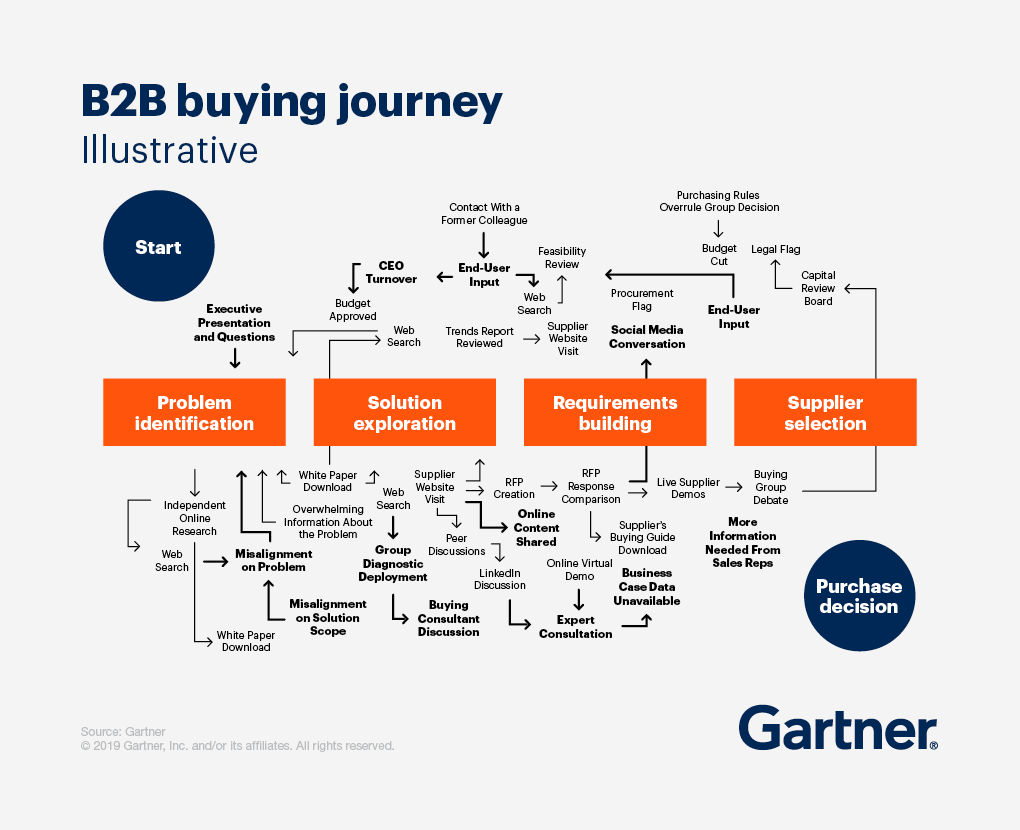
The 2022 buying journey isn’t linear or predictable, meaning the decision-making process isn’t going to look the same for every organization.
That’s why it’s important to do your research and ask the right questions. We’ll get into this below.
Why Is Identifying Decision-Makers Important in Sales?
In sales, the sooner you can talk to the decision-makers, the sooner you can either close (or drop) the deal.
Why? Because you get direct feedback on whether the product/service you’re selling is a good fit for the business or not.
When sales professionals spend time talking to prospects who can’t ultimately make the decision, the sales process drags on longer because of a slower feedback loop. This is because the information needs to get passed on to the right person, in turn, you get 1) longer wait periods and 2) less control of the information getting communicated.
Ultimately, talking directly to the decision-maker is your best bet for effectively communicating the value of your offering as well as speeding up the process.
How to Identify And Engage Decision-Makers
1. Map Out the Ideal Persona — Who Are You Selling To?
Before you start looking, you’ll need a map of who you’re trying to find: the ideal personas.
Common qualities of a decision-maker persona include:
- Job title: Manager, Executive, VP, Director
- Responsibilities: Oversees strategy and has authority over purchasing decisions
- Tenure: Not always, but typically decision-makers have longer tenure which equals more company knowledge
It’s also important to identify the type of decision-maker. Not all companies use a top-down approach, so your decision-makers could fall into three categories:
- Decision-makers: Who will ultimately make the call to sign the paperwork
- Advocates: Who does the research, takes the calls, and passes along the information
- End-users: Who will be engaging with your product or service on a regular basis
For example, if you’re selling sales software:
- Decision-makers: VP of Sales, Sales Managers
- Advocates: Sales Ops
- End-users: Sales Development Reps, AEs
In order to figure out who your potential personas are, ask yourself:
- Who will sign the contract?
- Who does the contract signer listen to? They won’t sign if (who) dissents?
- Who would I be interacting with beyond the sale?
2. Find Out Who Fits the Bill on LinkedIn
What’s the fastest way to track real-time company changes? Researching on LinkedIn.
Once you know who your ideal decision-makers are, you can start plugging in your research.
A simple way to do this: Use the search functionality.

Pro tip: When researching your prospects on LinkedIn, take note of their accomplishments, commonalities, and their interests.
LinkedIn is a gold mine for gaining prospective information; it’ll give you the leg up you need to stand out in conversations with decision-makers.
Keep note of these findings so you can enter your call with a custom sentence that’s personalized to the decision-maker.
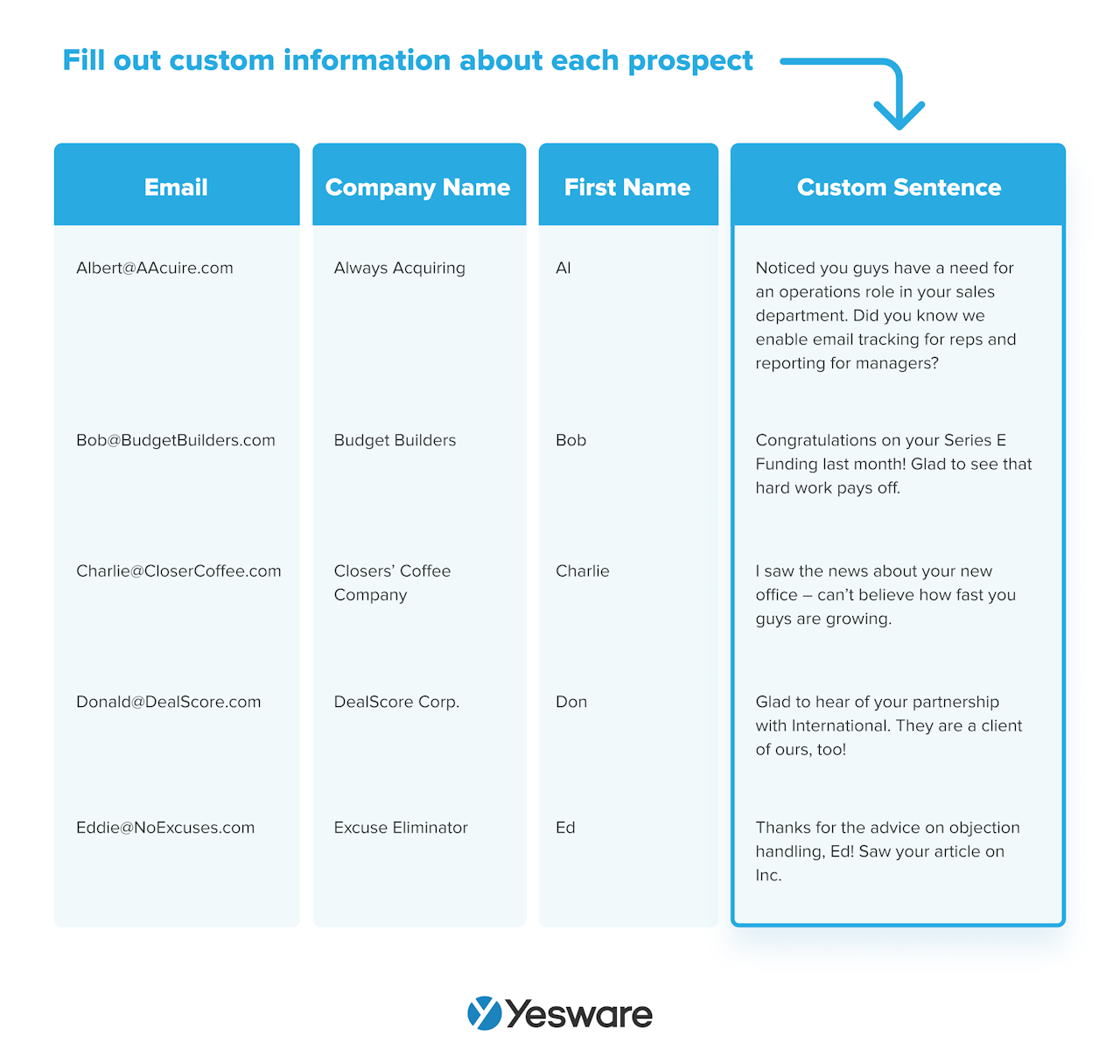 Grab the template shown above to help you organize your prospect research and create customized sentences.
Grab the template shown above to help you organize your prospect research and create customized sentences.
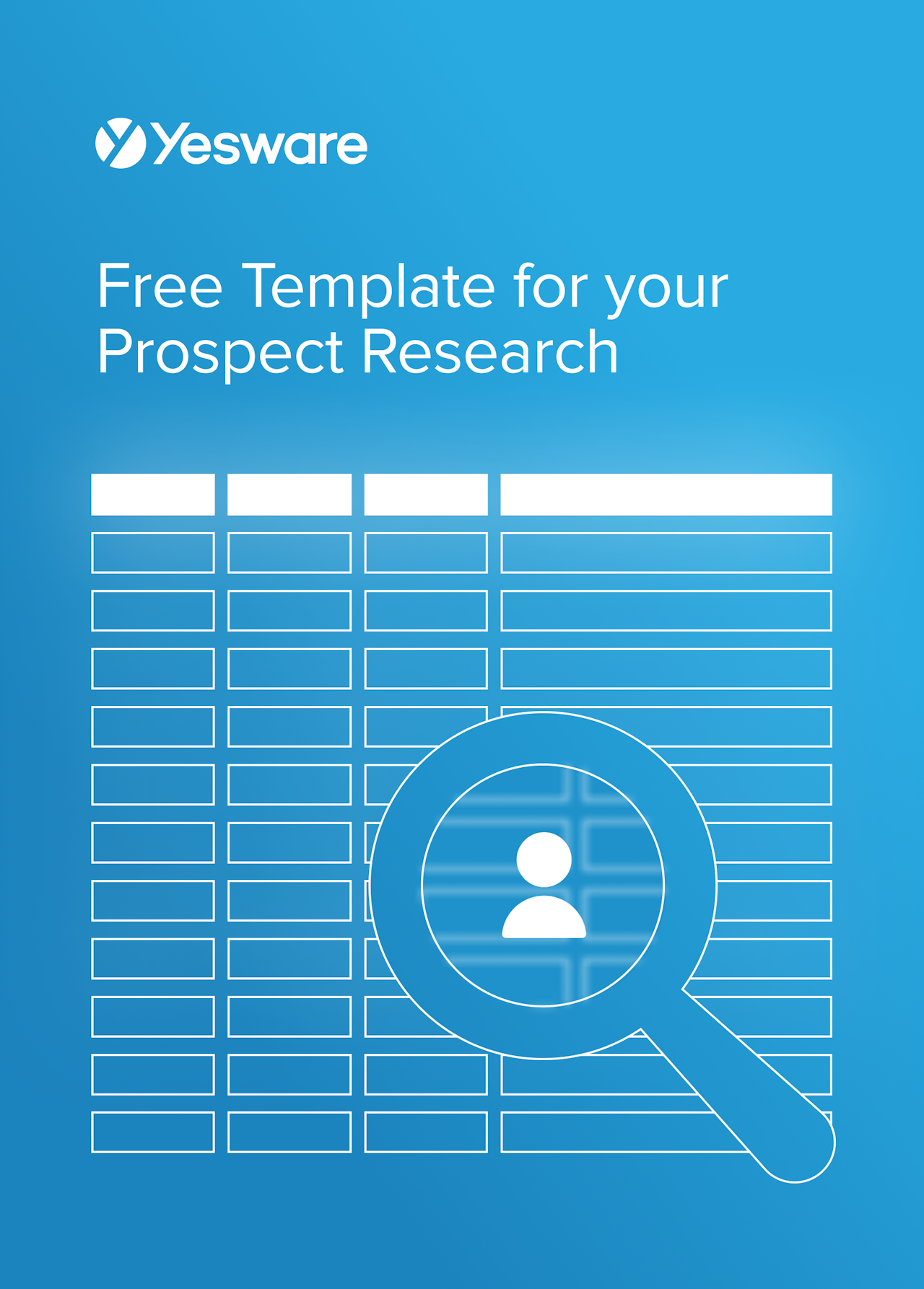 Free Template for Your Prospect ResearchThis customizable template will help you organize all prospect research in one place so you can quickly personalize outreach.
Free Template for Your Prospect ResearchThis customizable template will help you organize all prospect research in one place so you can quickly personalize outreach.
3. Map the Organization
It’s important to understand the hierarchy of the company – you can visualize this by mapping the organizational structure.
You can leverage this information through LinkedIn, their “about us” or leadership page on their website, and any public information. By doing so, you can identify levels of authority and better understand who each person reports to. This will lead to better buyer conversations and more visibility on your end.
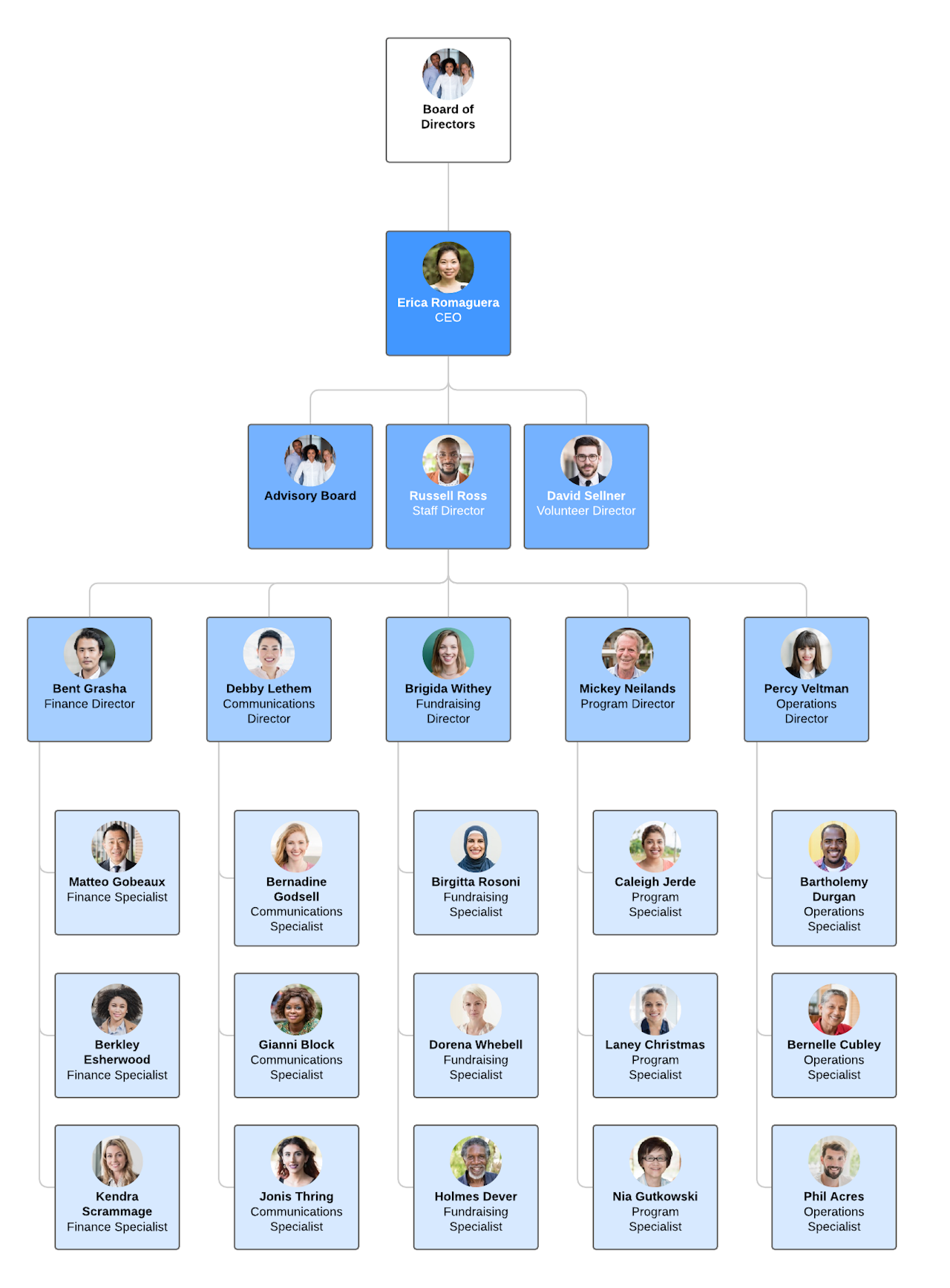
It’s also important to note the size of the company. Larger companies will often have multiple decision-makers whereas smaller companies may have one or two.
4. Identify and Persuade Influencers and Gatekeepers
When trying to reach a decision-maker, it’s helpful to identify other personas in the company who will directly affect your relationship. Such as:
- Influencers: The people who influence the decision-maker; they’re often the main point of contact and are responsible for lining up the appropriate stakeholders throughout the sales process.
- Gatekeepers: These people work closely with decision-makers and can be in control of administrative tasks such as communication inquiries. Gatekeepers can be executive assistants, administrative assistants, receptionists, etc.
The best way to overcome any blockers with influencers and gatekeepers is to learn how to talk to them. Adapt your message to the specific persona you’re talking to because they’re ultimately the ones who are going to grant or block your access to the decision-makers.
Remember, sales reps can still gain valuable relationships with gatekeepers; build rapport, be friendly, and treat them with respect. If you do, you’re much more likely to get to your target persona: the decision-maker.
5. Send Cold Outreach That Actually Stands Out
Never send an email to a decision-maker without ensuring it’s personalized. Show that you’ve done your research.
As stated above, use findings in your research to create and use custom sentences in your conversations.
Uncommon commonalities are one of the fastest ways to grab their attention. Do you have something in common that’s not particularly common? Mention it in your email.
Here’s an example:
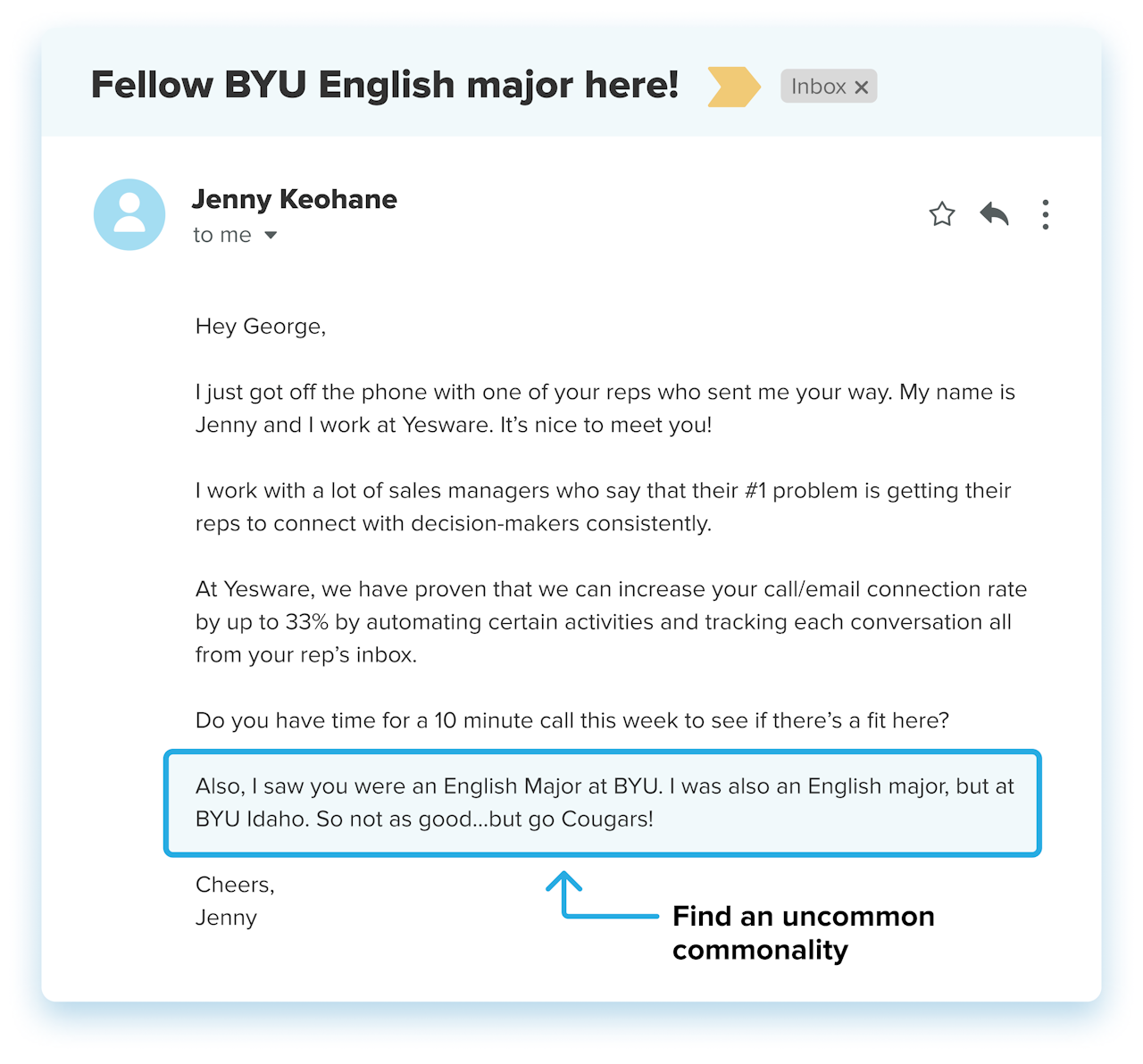
Qualifying Questions About the Decision-Maker
Sometimes you’re unsure of whether you have the decision maker on the phone or not, and that’s completely normal. Here are some questions to help you identify whether you’re talking to the right person and if not, how they can lead you in the right direction.
- Who else is involved in the purchasing decision?
- What steps need to take place in order to purchase your chosen solution?
- What is your role in the decision process?
- Who is the end user of this product?
- What does your typical purchase approval process look like?
- How are other stakeholders involved?
- How are other stakeholders evaluating this purchase?
- What does the typical purchasing process for this type of service look like?
- What needs to happen in order for the decision process to be successful?
- How have decisions similar to this one been made in the past?
- Who will be signing off on this purchase?
- Are you the sole owner of this initiative?
- To ensure all stakeholders are informed on important information, is there anyone else we should bring into the conversation?
- I’ve found that [role] typically has a say in this type of decision, should we bring them into the conversation?
- Should I be aware of any concerns from other stakeholders?
- Is there anything I can do to help the communication process between stakeholders?
- Do you need anything from me to help present this to other stakeholders?
Conclusion
At the end of the day, no buying process is going to look the exact same. What you can control is how soon you get in front of the right people, and that’s done by effective research and questioning.
The sooner you can get to the decision-maker, the sooner you can get your answer. Whether that be a yes or a no, it’ll save you time so that you can go find the right prospects (or, close a mutually beneficial deal).
Get sales tips and strategies delivered straight to your inbox.
Yesware will help you generate more sales right from your inbox. Try our Outlook add-on or Gmail Chrome extension for free, forever!
Related Articles
Casey O'Connor
Casey O'Connor
Jenny Keohane
Sales, deal management, and communication tips for your inbox
![How to Identify and Reach a Decision-Maker [+ Qualifying Questions]](/blog/_next/image/?url=https%3A%2F%2Fwww.yesware.com%2Fwp-content%2Fuploads%2F2018%2F01%2Fdecision-maker-yesware.jpg&w=1984&q=75)
